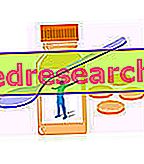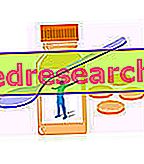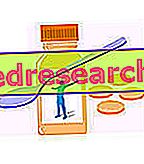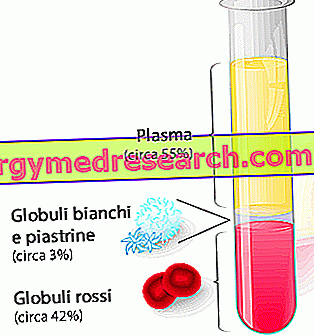ESKIM ® is a drug based on ethyl esters of polyunsaturated fatty acids (EPA and DHA not less than 85%)
THERAPEUTIC GROUP: Lipid-lowering agents - Ethyl esters of polyunsaturated fatty acids
IndicationsAction mechanismStudies and clinical effectiveness Usage and dosage instructionsWarnings Pregnancy and lactationInteractionsContraindicationsUndesirable effects
Indications ESKIM ®
ESKIM ® is indicated as a pharmacological aid in case of hypertriglyceridemia, if a hypolipid dietary plan and other behavioral treatments have not guaranteed a good therapeutic effect.
ESKIM ® can also be used, together with other therapeutic measures, in the secondary prevention of the patient with previous myocardial infarction in order to reduce mortality.
ESKIM ® mechanism of action
The ethyl esters of polyunsaturated fatty acids, taken orally, are absorbed in the intestine in a way comparable to what happens for all the other lipids taken with the diet. Not being able to circulate freely in the circulatory stream, they are conveyed to specific proteins inside lipoproteins, which guarantee an effective transport at the level of the various tissues. Studies conducted on the pharmacokinetics of polyunsaturated fats have identified the highest density density of these nutrients in chylomicrons and VLDLs.
The therapeutic effect of ESKIM ® is mainly due to eicosapentanoic acid (EPA) and docosahexanoic acid (DHA). These fatty acids - intercalated in the cell membrane in the form of phospholipids - can compete with arachidonic acid, as substrates of some important enzymes (desaturases). The result is a reduction of the synthesis of prostaglandins and proinflammatory leukotrienes, but also of platelet aggregants; on the other hand, there is a beneficial increase in anti-inflammatory molecules. This cellular balance, supported by a reduced hepatic synthesis of cholesterol and triglycerides, results in an anti-inflammatory, anti-atherosclerotic and antithrombotic action, able to reduce the incidence of cardiovascular pathologies.
Several studies are still clarifying the various biological mechanisms in which these molecules with pleiotropic capabilities are involved, highlighting - among other things - an important antiarrhythmic effect resulting from the stabilization of myocardiocyte cell membranes.
Studies carried out and clinical efficacy
OMEGA 3 AND CARDIOVASCULAR EVENTS
The literature proposes numerous studies on the effectiveness of supplementation with omega 3 in the prevention of cardiovascular diseases, with conflicting results. This study, conducted on the evaluation of more than 29 clinical trials (for a total of 35, 144 enrolled patients), shows how the daily intake of omega 3 could determine only a modest reduction in mortality, not statistically significant.
2. OMEGA 3 AND TRIGLICERIDEMIA
The very high amount of studies in the literature, related to the efficacy of omega 3 therapy, allowed the authors to quantify the hypoglyceridemic action of these molecules. More precisely, the daily intake of doses ranging from 200 to 500mg of EPA and DHA can guarantee a reduction in plasma triglyceride levels from 3 to 7%.
3. THE OMEGA 3 IN DIABETIC PATHOLOGY
Patients with type II diabetes have an increased risk of developing cardiovascular events, with a significantly higher mortality increase than the normal population. This meta-analysis has shown that the intake of omega 3 can lead to a reduction in mortality of about 18%, a reduction in platelet activation, a valuable anti-inflammatory activity, and a balancing of the lipid profile.
Method of use and dosage
ESKIM ® soft capsules of 500mg / 1000mg of ethyl esters of polyunsaturated fatty acids, titrated to EPA and DHA at least 85% and with a ratio 0.9 / 1.5: up to 3 1 gram soft capsules could be used for the treatment of hypertriglyceridemia per day, adjusting the dosage based on the results and objectives. Both before and during the therapeutic pharmacological treatment, it would be advisable to follow a hypolipidic diet and a correct lifestyle.
In the secondary prevention of the infarcted patient the daily dosage of 1 gram seems to be the most used.
IN ANY CASE, BEFORE TAKING ESKIM ® - THE REQUIREMENT AND CHECK OF YOUR DOCTOR IS NECESSARY.
ESKIM ® warnings
Polyunsaturated fatty acids are nutrients commonly found in nature; therefore, in most cases, they are well tolerated and with a high security profile. Despite these characteristics, before resorting to the use of a hypotriglycidemic drug treatment it would be advisable to pursue a hypolipidic diet and an active lifestyle for at least a quarter.
Given the haemofluidifying and anti-aggregating action of these molecules, in order to avoid an increase in bleeding episodes, the intake of ESKIM ® should be under strict medical supervision in all those patients suffering from coagulation pathologies or in therapy with oral anticoagulants.
PREGNANCY AND BREASTFEEDING
Although there is no specific evidence and clinical trials in this regard, the intake of omega 3 does not appear to present mutagenic and teratogenic effects on the fetus. Despite this, it would be advisable to always consult your doctor and your gynecologist in order to assess the correct relationship between risks and benefits.
Interactions
The ethyl esters of polyunsaturated fatty acids contained in ESKIM ® do not appear to interact with active ingredients of various kinds. However, the concomitant intake of anticoagulant drugs could lead to an increase in prothrombin time, with a greater incidence of bleeding events.
ESKIM Contraindications
ESKIM ® is contraindicated in case of hypersensitivity to one of its components.
Undesirable effects - Side effects
ESKIM ® appears to be well tolerated and has no clinically relevant side effects.
Nausea, vomiting and gastric burns seem to be the most adverse reactions described in the literature.
Note
ESKIM ® is salable only under medical prescription.



